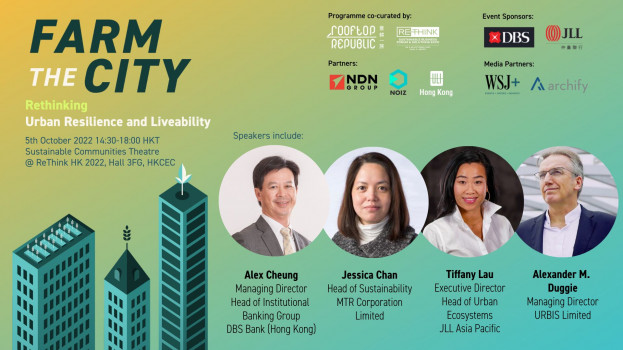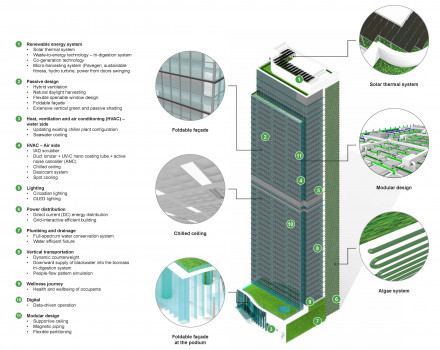Designing post-COVID workplaces: How different working styles can support autonomy and belonging




Senior interior designer at Warren and Mahoney, Gabrielle Gatt, is a specialist in workplace strategy and design. She recently completed a graduate diploma in psychology focusing on organisational psychology, including workplace experience and wellbeing outcomes in unassigned workplaces.
We are entering an exciting period of transformation in workplace design, with people demanding more from the spaces that they work in and what tools they need to succeed. But are we over-thinking it? Have the basics really changed?
As a workplace designer and researcher, I’ve seen first-hand an increasing demand for work environments that stimulate both productivity and overall wellbeing. With people becoming accustomed to working remotely through COVID-19, the question of how our workplaces can be designed to address changing priorities has shifted even further into the spotlight.
Last month, Vodafone NZ announced that they will sub-let half of their Auckland and Christchurch offices, as employees chose to work from home more frequently. But, while more and more organisations are shifting to flexible, unassigned working styles (where all desks and facilities are shared), research on the implications of these different working styles on employee attitudes and wellbeing remains under-researched and seemingly conflicting across many studies.
Alongside Dr Lixin Jiang from the University of Auckland, I conducted research on a workplace designed by Warren and Mahoney, into employee wellbeing and organisational outcomes in flexible, unassigned workplaces. The study focused on how the workplace can support two fundamental human needs – autonomy and belonging – and the subsequent positive outcomes that can result, for both the individual and the organisation, when these needs are fulfilled.
This study was unique in that there were two different unassigned work arrangements within the one building, allowing a direct comparison. Work Arrangement 1 allowed employees to choose where and with whom they worked. They had the opportunity to easily collaborate with other business groups in their building, or alternatively work from home (WFH) or away from the office. Employees in Work Arrangement 2 sat in allocated ‘neighbourhoods’ with their functional group, where all desks and work settings were shared.
We predicted that those with greater flexibility to work where and with whom they chose to would have higher autonomy leading to higher job satisfaction and lower emotional exhaustion (a common measure of wellbeing at work). On the other hand, we expected that Work Arrangement 2 would have a greater sense of belonging, due to spending more time with their team and having some sense of ownership of their space.
As expected, greater flexibility resulted in higher autonomy, which was linked to lower emotional exhaustion. Yet, surprisingly, those in Work Arrangement 2 didn’t report higher levels of belonging compared with Work Arrangement 1, showing the number of hours physically spent with their teams, in close proximity, did not predict higher belonging.
Although our study was carried out before the COVID-19 pandemic, lockdown has provided a real-life, large-scale experiment of flexible, unassigned working, whereby people’s awareness of the need for autonomy and to belong, in order to thrive, has never been more acute. Warren and Mahoney’s “Transforming the Global Workplace” study, undertaken during lockdown, showed that people valued the flexibility and autonomy that WFH offers and, in particular, the extra time spent not having to commute to work. On the flip side, the thing that participants missed most about the office was the people.
It goes without saying that feeling like you’re a part of a team and having a sense of belonging is vital to a constructive work dynamic. It is also shown to predict higher work engagement, higher job satisfaction and lower emotional exhaustion – all good stuff for a thriving individual and organisation.
But sometimes the devil really is in the detail. Finding no difference in sense of belonging between the two work arrangements threw up questions about the specific characteristics of the workplace that can support belonging. For organisations that are looking to adopt a more flexible work practice, there are a few evidence-based insights to consider when deciding what the right flexible work solution is for them.
Firstly, working in an allocated team environment does not necessarily facilitate connections with others. Collaboration and the quality of interactions with others are key. Understanding the work-specific work activities of employees, including individual versus collaborative work, is critical to determine how best to support belonging.
Secondly, not all positive interactions that build belonging are equal and can be influenced by the type of space you have access to for your work. For example, being in closer proximity to your team, in open environments, may stimulate more instrumental interactions (the sharing of work information) resulting in a sense of work-related support from others. On the other hand, those with greater flexibility may have access to spaces where private conversations can occur more easily, stimulating expressive interactions (the sharing of personal information). Warren and Mahoney has invested in the global database Leesman to inform the future of work. Recent insights collected globally across some 160,000 people during lockdown support the latter, suggesting that private conversations, among other activities, are much better supported when working from home.
Lastly, don’t underestimate the power of serendipitous encounters, often leading to new ideas, innovation and a sense of belonging. Shared, unassigned work settings and generous social space allow people to stumble into unexpected opportunities that may lead to something great.
Both my research and the learnings from our collective and global WFH experiment show that an exceptional work experience can happen across multiple locations, from home to office to anywhere. Gone are the days when the workplace needs to do everything. As employees crave more flexibility and independence, there is a clear need to have the right spaces in the office to empower people with choice and to connect and build belonging.
Like it or not, post-COVID businesses and workplaces are going to need to work a lot harder to attract people to them. But I believe every project has the potential to contribute positively to employee wellbeing, so long as it is founded on a people-centric, evidence-based approach. Organisations that are courageous enough to engage with their employees, eliminate the unnecessary, and create offices that focus on these fundamentals will inherently support employee wellbeing and, in turn, create positive organisational outcomes.









 Indonesia
Indonesia
 Australia
Australia
 New Zealand
New Zealand
 Philippines
Philippines
 Singapore
Singapore
 Malaysia
Malaysia






